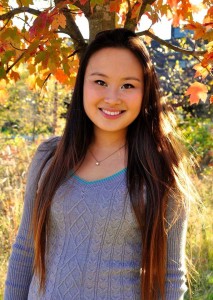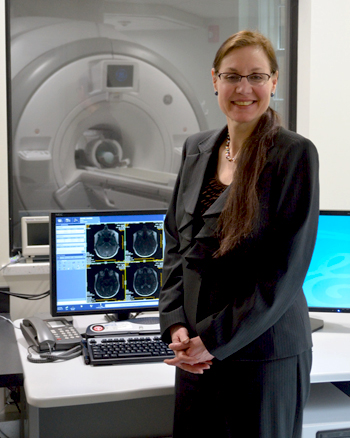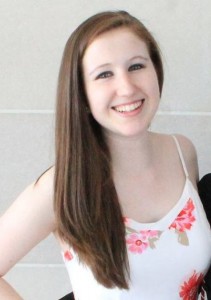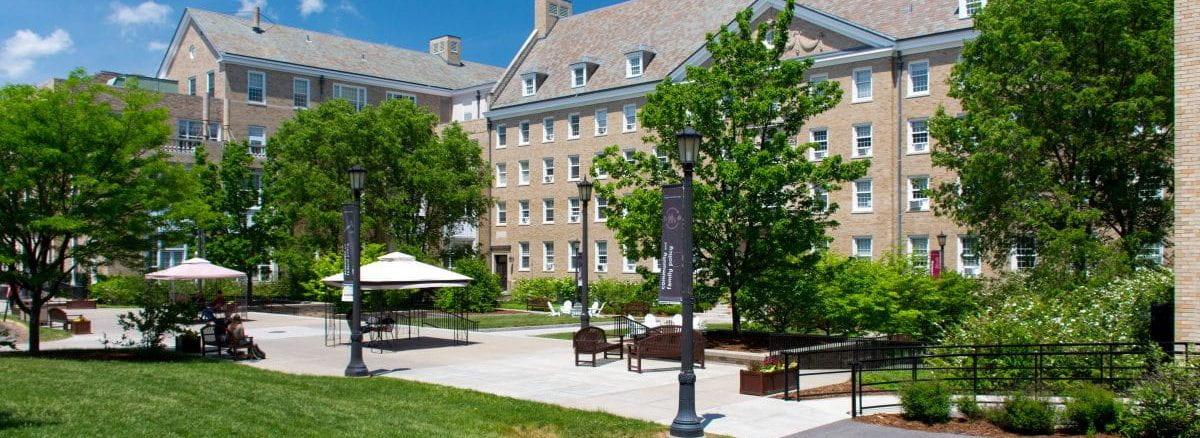
This summer, I’ve had the pleasure of combining the ultimate camp experience with the experience of working in a laboratory and conducting exciting, cutting-edge in-field research on decision making. The project, Health and the Brain Neuroscience Outreach, is a Cornell Cooperative Extension internship under the direction of Dr. Valerie Reyna. The mission of the CCE internship program is to translate and apply Cornell research in ways that can benefit communities all around New York State.
In late March, I joined Dr. Reyna’s Laboratory for Rational Decision Making as a member of the Health and Medical Decision Making Team, whose goal is to use research on decision making to help educators and medical professionals effectively use theory-based interventions and communicate risks to patients. Using the information they’ve effectively learned, these patients can then make informed decisions about their health.

My first task of the project was to update the curricula taught to middle school students in past years at 4-H Camp Bristol Hills, in Canandaigua, New York. Looking at two modules, Nutrition & Neuroscience and Genetics & Neuroscience. The goal of teaching both curricula was to help students better understand obesity prevention and genetic risk using theory and evidence-based methods.
The curricula were based on Dr. Reyna’s research on decision-making and the importance of incorporating “gist” (a fuzzy or vague representation that contrasts with a precise verbatim representation) into the lesson plans in order to see the effectiveness of a gist-enhanced curriculum. According to Fuzzy-Trace Theory, people tend to rely on gist (bottom-line meaning) rather than verbatim representations (such as exact wording or specific numbers) whenever they make decisions. In teaching the campers, the goal was to see an improvement in retaining the information learned through gist when making decisions, such as deciding between eating a cupcake or eating an apple. Examples of gist-enhanced concepts are: “Developing healthy eating and exercise habits has both long-term and short-term benefits for a person’s physical and mental health,” and “Your diet should consist mostly of fruits and vegetables.”
I was extremely excited to be able to work with the campers. It’s very rewarding to be able to be the person to expose kids to new information, especially the kind that has the potential to affect their lives for the better– like knowing the nutrition concepts and science behind eating well and exercising more, or understanding more about how genetics work. By reviewing Dr. Reyna’s research, I was able to generate a list of possibilities for fun, informative, and engaging activities for the campers. In order to get a better perspective of what a camper would like (around the ages between 11-14), I talked to kids of that age to get their opinions and feedback to develop the most effective and engaging activities. I also read and dissected Dr. Reyna’s empirical research, such as A Theory of Medical Decision Making and Health: Fuzzy Trace Theory (Reyna 2008) and Efficacy of a Web-Based Intelligent Tutoring System for Communicating Genetic Risk of Breast Cancer: A Fuzzy-Trace Theory Approach (Wolfe et al. 2015), to understand the theory behind what we teach in Health and the Brain. Her past publications revolve around how humans remember and process information, which is essential to the development of activities and curriculum for the camp.
After solidifying teaching plans and curricula, I was able to generate and order a material list needed for this year’s curricula. I also started looking into data from previous years to get a better idea of the project through learning how to use IBM SPSS Statistics software. Though at times learning the program has proven to be challenging, the skill set used in statistical analyses is essential to the research process and for my future career goals. Throughout my time of preparation of Health and the Brain in the lab, I have learned much about working in the lab and interacting with not only fellow researchers, but also professionals in other fields, and had a challenging yet enjoyable time getting acquainted to it. I’ve learned that time management is key to completing the project successfully, and held many practice sessions teaching the curriculum and improving my notes and lesson plans.
My adventure at 4-H Camp Bristol Hills began with staff training, including how to mitigate bullying, report child abuse, how to effectively work with kids, and how to de-escalate situations, etc. Staff training allowed me to be well prepared when the kids come to camp in order to make sure that the kids can get the best possible camp experience, and also to get a better sense of how to best engage and recruit kids to participate in the Health and the Brain Outreach Program. During my time at camp, I stayed in a log cabin called Big Dipper, which housed me, Corrine Casal '16, Margaret Sloan'18 (both from the Adolescent Transitions Lab at Cornell), and Sophia Franck (another intern working on a social media project for the camp). Connecting with all other counselors was very exciting, and I was able to join in on all the camp traditions, such as getting named by another counselor or fun camp songs or skits. We all use camp names at 4-H Camp Bristol Hills, and on the last day of each week, the campers try to guess our real names. My name at camp was Fence-Apella (Pella), because I fenced and sang a capella in high school! It was so inspiring to see how enthusiastic and welcoming the other counselors are to make sure the campers have the greatest time and feel comfortable at camp. The kids were so lucky to have such a diverse selection of activities, ranging from Archery and Air Riflery to Critter Care (where there are two baby white rabbits, hedgehogs, and even snakes).
After staff training came Week 1 of camp, when I finally got to meet all the bright-eyed campers! Every Sunday morning, I woke up early to drive with a graduate student from my lab to Canandaigua, New York, where 4-H Camp Bristol Hills is located. The natural beauty of the area and the camp is breathtaking, especially when the sun sets. Before each week starts, the camp staff had a potluck lunch meeting to get ready for the campers’ arrivals. Registration then began at around 1:30/2 PM for the campers. In order to recruit for the project, I set up a huge poster and table exemplifying all the fun activities and crafts we would do in Health and the Brain, and also talked to parents and campers who were waiting in line. Week after week, I became also more accustomed to and more successful in recruiting campers to participate in Health & the Brain. As an afternoon recreation activity, many campers were excited about drawing brains on swim caps and making DNA using pipe cleaners and beads, along with many other hands-on games and activities. It was so interesting to find kids who were so excited about science and wanted to sign up immediately, and to find others who were more curious and trying to find something that they felt passionate in and wanted to give science a try. After getting everything organized and settling down after the registration period, I would eat dinner with the campers. One of my favorite times during the weeks was being able to meet new kids during mealtimes and talk about their different interests, ranging from horseback riding to TV shows. At night, I would participate in a warm campfire and an evening program, where the counselors and campers get together to do all kinds of fun games with different stations to get the campers to make new friends and be comfortable being themselves at camp.
Health & the Brain had a lot of really bright and curious kids, which was very inspiring. Teaching the curricula at camp was very successful. Many of them knew so much already and had so many questions for me; I’m not sure if I even knew as much as they do when I were their age! A lot of the campers were very inquisitive about different cancer issues and genetic questions and also interested in eating healthier and exercising well. Many had a lot of prior knowledge on vitamins and minerals and where they come from, such as iron from meats and protein or calcium from dairy products. They were also very keen on wearing their “brain swim caps” into the pool and showing off their DNAs to friends. The kids told me again and again how much fun they had and how much they had learned. Many of them were excited about getting a head start in school on the different topics revolving around neuroscience, genetics, and nutrition. Hearing great answers from campers made me feel like I really made a difference in their lives. For the processed foods activity in the nutrition curriculum, the campers split up into two groups: both of them are workers at food company’s factory, but in order to emphasize the differences between highly processed and unprocessed foods, one company processes the core ingredient (styrofoam ball) highly using trans fat (clay), high fructose corn syrup (glitter glue), etc., while the other company only cuts and packages the product. This activity, while very entertaining and involves a lot of the campers’ favorite hands on materials, like clay and beads, also starts the discussion for which product represents a healthier food choice and why.
During my last week at 4-H Camp Bristol Hills, I was able to work with Science, Technology, Engineering, and Mathematics (STEM) campers. I learned that part of working in the field for research involves flexibility, which was required to work around the STEM camper’s busy schedules in order to allow them to have the opportunity to be in Health & the Brain! During Monday through Wednesday, while I worked with other resident campers, other Cornell students working with Professor Franck from the Physics department worked with the STEM campers on building radios and satellite dishes. During my time with them on Thursday and Friday, they asked so many great questions for each topic, especially neuroscience. They knew so many things about the brain that were very advanced. Many of them had watched or read a lot about the brain and knew about different parts of the brain or case studies of special brain trauma, such as memory mechanisms in the hippocampus, or Phineas Gage, the American railroad construction foreman who had an accident that damaged most of his frontal lobe.
Even though each camp session lasts only one week, being together and meeting all these new campers makes one feel very connected to the camp and the kids, especially during moments where the entire camp gets together to hold hands and sing the goodnight song together. When I had to leave at the end of each week, despite being content and proud of a great week, I also felt an underlying sense of sadness to have to leave such a beautiful community where all the kids find places to truly be themselves and find best friends. The camp environment never ceased to amaze me; the campers were brimming with enthusiasm and the counselors still managed to top it week after week. While I’m saddened by the conclusion of my time at camp, I’m also very happy to have made so many great friends, amazing memories, and learned so many things!

I want to give special thanks to Dr. Reyna, Lindsay Dower ‘17, Dr. Priscila Brust-Renck '15, Dr. Allison Hermann and Tim Davis for allowing me to have the opportunity to be a part of such an exciting outreach project. Your continued support and guidance throughout the project was a huge factor for its success. I also want to thank the staff of 4-H Camp Bristol Hills for welcoming me with open arms, supporting me, and inspiring me with their enthusiasm and hard work! My internship with CCE Health and the Brain Neuroscience Outreach at 4-H Camp Bristol Hills has been such a memorable time. I’m incredibly grateful for the wonderful experience I’ve had this summer, which has allowed me to better understand not only how scientific research labs work and learn the techniques necessary in the future for my own work, but also the opportunity to conduct actual in-field research. With my love for working with kids and being able to get the full log-cabin camp experience, my time at camp has been absolutely phenomenal. This experience has allowed me to solidify my decision to pursue clinical psychology graduate work as a career, and inspired me to take on all opportunities with enthusiasm and determination.

